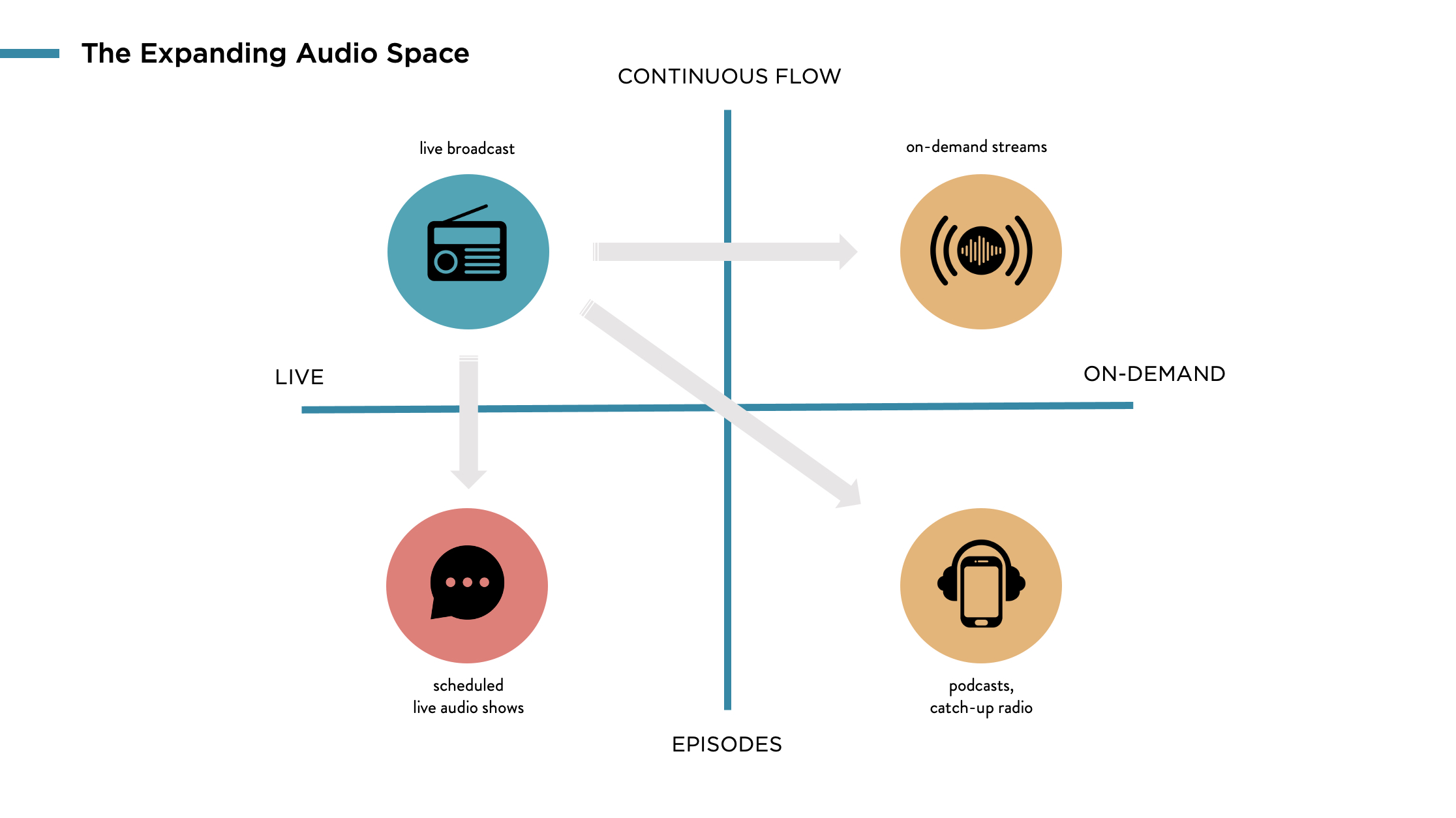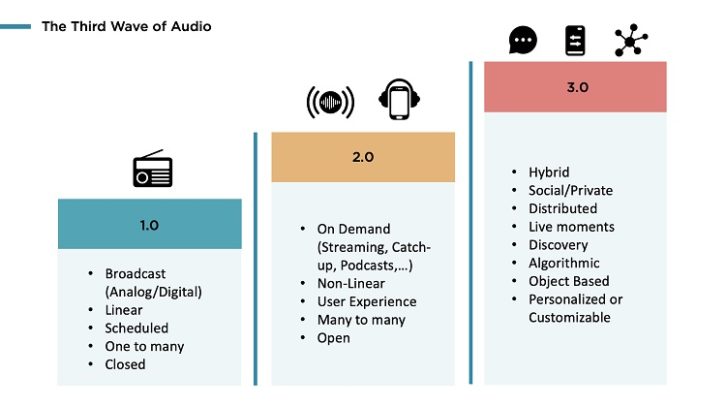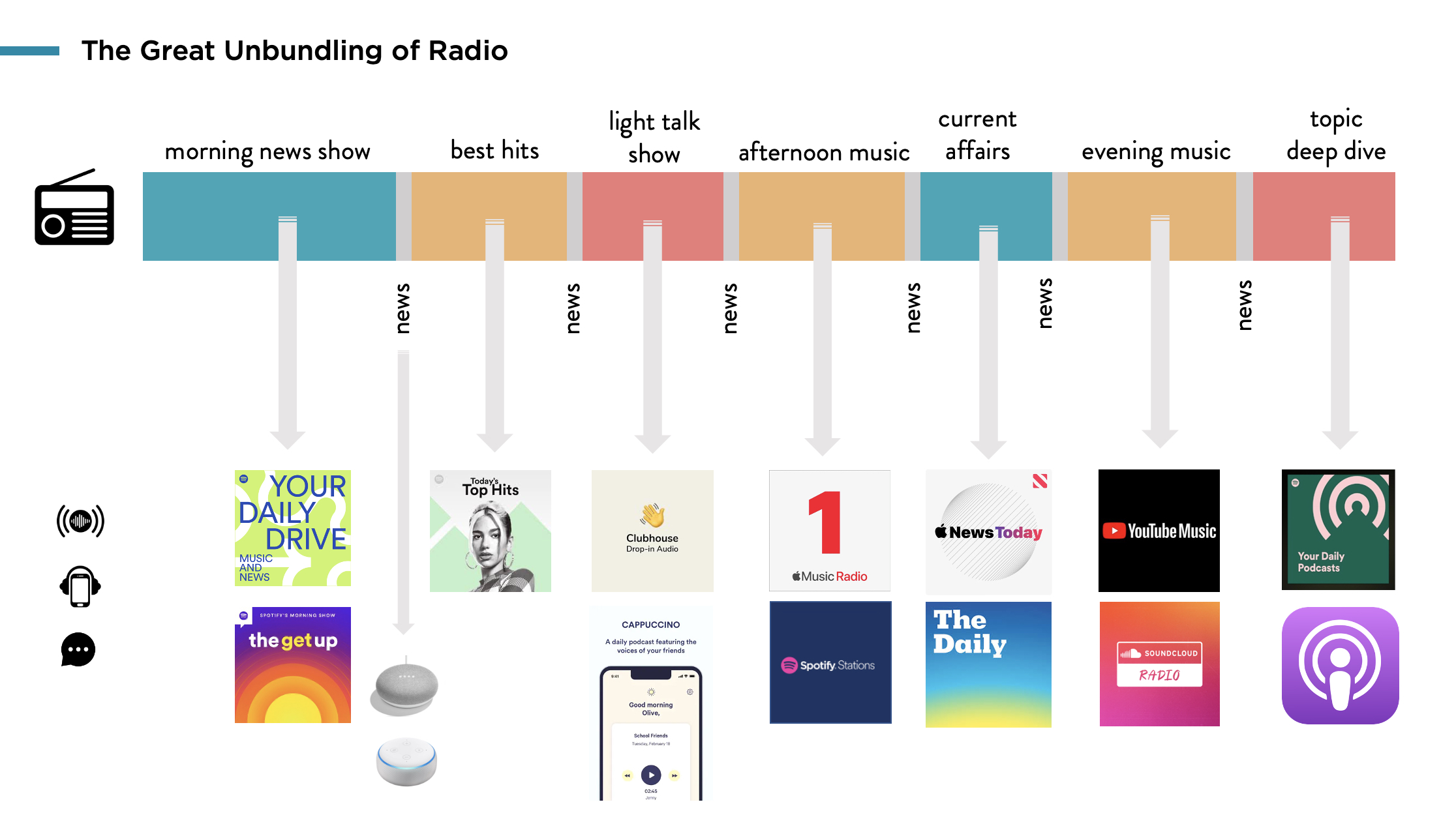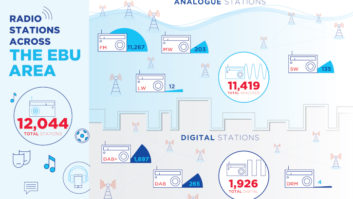The author of this commentary is head of Digital, Platforms & Transformation for the EBU, an alliance of public service media with 115 member organizations in 56 countries. Read about its mission here.
“One, two, three, four. Is it snowing where you are, Mr. Thiessen?”
The very first radio transmission of a voice in 1900 by Reginald Fessenden was little more than a casual question about the weather.
His name is now long forgotten by most people, but that initial conversational aspect of broadcast radio seems to be more alive than ever.
Digital, distributed, in spontaneous organized rooms, audio conversations are taking the internet by storm. Of course, I’m talking about Clubhouse and various other social audio apps that are currently seeing a steady rise in popularity.
Hype? Perhaps. The ecosystem is still new and fragile and the business model as yet unclear. But the map is expanding and as the world is locked in we all seem to crave more intimate digital experiences. Where video can quickly feel too much, audio has a lower threshold for spontaneous socializing.
So is this the next step in the great unbundling of radio?
How Radio Evolves
If Radio 1.0 is live, linear terrestrial radio with all its magic: connecting people, ideas and music in a schedule that guides listeners across the day then Radio 2.0 can be considered the moment when users got control through interactivity and on-demand content. Very much anything that happened after the invention of the iPod.
Today web and mobile streaming services also emulate radio-like flows, letting you cue up music, talk and more. Spotify and Deezer come to mind as obvious examples, but the range is endless and even video services like YouTube and Vimeo can now be considered as alternative radio stations.
What is left is the less developed area of live episodes: in the moment — spontaneous — and social but also highly tailored or customizable, the third wave: Radio 3.0.

A Third Wave
The new wave of audio apps have a distinctive social layer. They are either extensions of existing social networks allowing people to chat and send audio messages. (e.g., Twitter launching audio tweets)
Or they are whole new social ecosystems that have audio at the center like Clubhouse, Space or Voicehub. These last ones can be quite overwhelming with hundreds of people in “rooms” in the hands of a skilled or unskilled moderator.
But even here you start seeing well-produced and executed talk shows. With great guests, clear rules of engagement and schedules you can add to your agenda so you don’t miss any upcoming talks.
A second and equally important evolution that is part of Radio 3.0 is the advent of personalized and customizable radio with object-based media, allowing users to mix and match their live radio streams with the music they like, fast forward, save, skip and any other smart or chosen interaction.
One radio show becomes a million individual experiences — while keeping a shared live backbone.

The Great Unbundling
This third wave further unbundles the traditional radio stream of morning shows, news briefings, hit shows and intimate interviews. Every part of the schedule now can be experienced in isolation.
- The morning show: Spotify is clearly eyeing this traditional radio block with new formats like “Your Daily Drive” and “The Get Up.’
- The news briefing: Google and Amazon are both redefining the news briefing and are experimenting with aggregated new news formats like “Your News Update.”
- The hits: Spotify and other music streaming platforms have defined their own rankings and are challenging the classic hitlists.
- The talk show: Clubhouse and social audio apps are experimenting with new scheduled live panels and talk shows and seeing figures like Elon Musk and Mark Zuckerberg appear.
- The focused deep dive or interview session: Interview podcasts are a popular genre that mimic the intimacy of a radio conversation.

Reinventing Radio
Rather than a threat, this could be an opportunity for traditional radio broadcasters. Never before has there been such a rich landscape for audio experiences.
From my European vantage point at the EBU, I see many public broadcasters rising to the occasion.
- Podcasting is on the rise and a significant part of that new podcast listening time in Europe goes to content produced by public service media (PSM). In the UK, BBC podcasts account for 34% of all podcasting hours.In France, data from the new eStat Podcast measurements by Mediamétrie clearly illustrates the leadership position of Public Broadcaster Radio France in the French podcast landscape.
- PSM rethinks radio in myriads ways. Experimenting with smart streams and atomized content that can be rearranged to enhance the user experience. The new functionalities German Public Broadcaster SWR is exploring in their new mobile app are an impressive example.
- PSM also evolve by putting more local and diverse talent in front of the mic — blending different media and styles to suit the tastes of a new generation. RTBF Tarmac comes to mind as a prime example. And new social audio spaces feel like a natural ground to deepen the connection with the audience and engage in valuable conversations.
These are just a few examples of how radio and audio is evolving. We are just at the start of the third wave. A lot of the new opportunities will have to be tested and tried. Not everything will stick; but experimentation is key and doesn’t need to be complex.
Comment on this or any story. Email [email protected].







